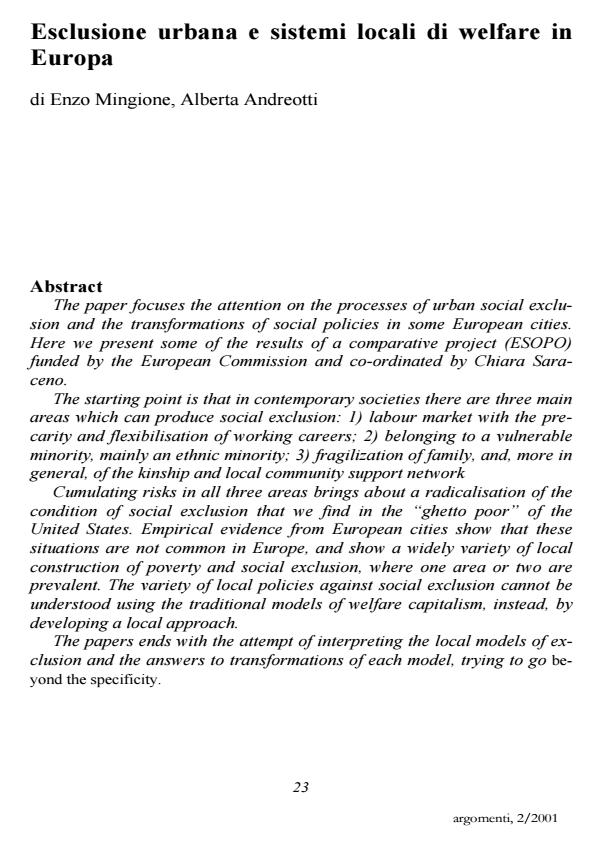Esclusione urbana e sistemi locali di welfare in Europa
Journal title ARGOMENTI
Author/s Enzo Mingione, Alberta Andreotti
Publishing Year 2001 Issue 2001/2
Language Italian Pages 21 P. File size 334 KB
DOI
DOI is like a bar code for intellectual property: to have more infomation
click here
Below, you can see the article first page
If you want to buy this article in PDF format, you can do it, following the instructions to buy download credits

FrancoAngeli is member of Publishers International Linking Association, Inc (PILA), a not-for-profit association which run the CrossRef service enabling links to and from online scholarly content.
The paper focuses the attention on the processes of urban social exclusion and the transformations of social policies in some European cities. Here we present some of the results of a comparative project (ESOPO) funded by the European Commission and co-ordinated by Chiara Saraceno. The starting point is that in contemporary societies there are three main areas which can produce social exclusion: 1) labour market with the precarity and flexibilisation of working careers; 2) belonging to a vulnerable minority, mainly an ethnic minority; 3) fragilization of family, and, more in general, of the kinship and local community support network Cumulating risks in all three areas brings about a radicalisation of the condition of social exclusion that we find in the "ghetto poor" of the United States. Empirical evidence from European cities show that these situations are not common in Europe, and show a widely variety of local construction of poverty and social exclusion, where one area or two are prevalent. The variety of local policies against social exclusion cannot be understood using the traditional models of welfare capitalism, instead, by developing a local approach. The papers ends with the attempt of interpreting the local models of exclusion and the answers to transformations of each model, trying to go beyond the specificity.
Enzo Mingione, Alberta Andreotti, Esclusione urbana e sistemi locali di welfare in Europa in "ARGOMENTI" 2/2001, pp , DOI: